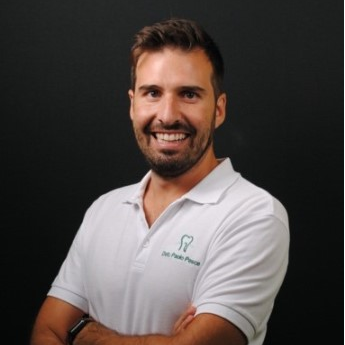Current Trends in Bone Augmentation Techniques and Dental Implantology: Part II
A special issue of Journal of Clinical Medicine (ISSN 2077-0383). This special issue belongs to the section "Dentistry, Oral Surgery and Oral Medicine".
Deadline for manuscript submissions: closed (25 April 2024) | Viewed by 12620
Special Issue Editors
Interests: dental implants; implantology; implant surface; peri-implantitis; restorative materials; dental abutments
Special Issues, Collections and Topics in MDPI journals
Interests: dental implants; implantology; surface; peri-implantitis; restorative materials; dental abutments
Special Issues, Collections and Topics in MDPI journals
Interests: dental implants; implantology; 3D printing; oral surgery; periodontology; bone augmentation; bone reconstruction; dental materials; biopolymers
Special Issues, Collections and Topics in MDPI journals
Special Issue Information
Dear Colleagues,
Welcome to this Special Issue dedicated to the remarkable field of bone regeneration and dental implantology. Bones play a pivotal role in maintaining structural integrity, mobility, and overall functionality of the human body. However, the loss or damage of bone tissue due to trauma, disease, or aging presents significant clinical challenges. This Special Issue gathers cutting-edge research and insights into the latest advancements in bone regeneration strategies and implantology for oral rehabilitation.
Over the years, there has been a surge in innovative approaches aimed at enhancing bone repair and regeneration in the dental field. Dental implants have also undergone a rapid evolution in the last decades in order to enhance osseointegrarion and promote the long-term success of implant-supported restorations.From biomaterials and tissue engineering to stem cell therapies and bioactive factors, the breadth of strategies explored is expanding rapidly. This Special Issue serves as a platform to explore the multifaceted aspects of bone regeneration, including clinical studies and the clinical applications of novel biomaterials and technologies.
Contributions from experts in fields such as oral and maxillofacial surgery, periodontics, prosthodontics, but also orthopedics provide a comprehensive view of the current state of bone regeneration research. As editors of this Special Issue, we are excited to present a collection of groundbreaking research that promises to drive the field forward and bring us closer to effective clinical interventions for bone-related disorders and prosthodontic rehabilitations supported by dental implants. We extend our gratitude to all the researchers and authors who have contributed to Part 1 of this Special Issue, and we hope that their work will inspire further advancements in the quest for successful bone regeneration therapies and optimal implant-supported rehabilitations.
Dr. Maria Menini
Dr. Paolo Pesce
Dr. Nicola De Angelis
Guest Editors
Manuscript Submission Information
Manuscripts should be submitted online at www.mdpi.com by registering and logging in to this website. Once you are registered, click here to go to the submission form. Manuscripts can be submitted until the deadline. All submissions that pass pre-check are peer-reviewed. Accepted papers will be published continuously in the journal (as soon as accepted) and will be listed together on the special issue website. Research articles, review articles as well as short communications are invited. For planned papers, a title and short abstract (about 250 words) can be sent to the Editorial Office for assessment.
Submitted manuscripts should not have been published previously, nor be under consideration for publication elsewhere (except conference proceedings papers). All manuscripts are thoroughly refereed through a single-blind peer-review process. A guide for authors and other relevant information for submission of manuscripts is available on the Instructions for Authors page. Journal of Clinical Medicine is an international peer-reviewed open access semimonthly journal published by MDPI.
Please visit the Instructions for Authors page before submitting a manuscript. The Article Processing Charge (APC) for publication in this open access journal is 2600 CHF (Swiss Francs). Submitted papers should be well formatted and use good English. Authors may use MDPI's English editing service prior to publication or during author revisions.
Keywords
- bone regeneration
- tissue engineering
- biomaterials
- stem cell therapy
- osteogenesis
- bone repair
- regenerative medicine
Benefits of Publishing in a Special Issue
- Ease of navigation: Grouping papers by topic helps scholars navigate broad scope journals more efficiently.
- Greater discoverability: Special Issues support the reach and impact of scientific research. Articles in Special Issues are more discoverable and cited more frequently.
- Expansion of research network: Special Issues facilitate connections among authors, fostering scientific collaborations.
- External promotion: Articles in Special Issues are often promoted through the journal's social media, increasing their visibility.
- Reprint: MDPI Books provides the opportunity to republish successful Special Issues in book format, both online and in print.
Further information on MDPI's Special Issue policies can be found here.








